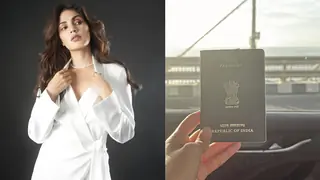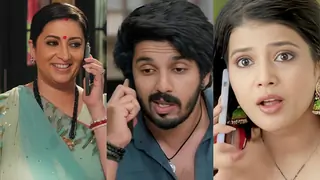Posted:
Jazz on Churchgate Street
Bow ties, Lobster Thermidor, tipple in a teacup and Chris Perry"the look of Anurag Kashyap's forthcoming film reminds us of Bombay's gilded age
Sidharth Bhatia 
Tweet 0
inShare
inShare
In the late 1950s, probably 1958, a new restaurant opened in the Kala Ghoda area in Bombay. Built over two levels, La Bella, as it was called, was set up to compete with the fancy joints of Churchgate Street (now Veer Nariman Road)"The Ambassador hotel, Gaylord and Volga"and round the corner from them, The Ritz hotel and Astoria Hotel. These were the regular watering holes for the city's elite. Each of these restaurants boasted of a top band, a popular singer and a cabaret dancer"La Bella's owners decided they would go one up and import not just the entertainers but also the chef, who came from Germany.
I grew up hearing stories of La Bella from my father, who was the manager there. He had arrived in Bombay from Karachi via Delhi and got a job, first in Astoria and then La Bella. He spoke of the glamour-filled nights, of the Ceylonese cabaret dancer, the British sextet (the Margaret Mason band) and the elite"industrialists, socialites, film stars like Raj Kapoor and Dilip Kumar" who thronged the place every night. Old photos show him and the guests in the fashionable attire of the time"sharp suits, bow ties, slicked-back hair. In the fancier restaurants, black tie was the norm. The ladies wore mostly saris but also gowns, and, if very daring, trousers"smoking by women was not unheard of. It is easy to imagine the tinkling of the piano, the roar of the trumpet and the dulcet tones of the crooner in the background.

It is this glittering universe that Anurag Kashyap has tried to replicate in his film Bombay Velvet, which is releasing in theatres on 15 May. It is apparently set in the Bombay of the 1950s-1960s"the official trailer gives us glimpses of the gowned singer, the six-piece band, patrons dressed to the nines. Kashyap reimagines a Bombay of trams, streamlined Cadillacs and sinister, Fedora-wearing men, scowling at everything through the haze of blue cigarette smoke as they search for a photo negative"clearly, he has noir on his mind.
Bombay of the 1950s and 1960s is a time well-remembered by many who insist it was the Golden Era of the city's history: when the city was carefree, leisurely, clean, and most of all, liberal.

In Bombay, Churchgate Street was at the epicentre of the entertainment quarter that extended down to Flora Fountain and then beyond to Kala Ghoda. The names of the restaurants told their own story; apart from the ones already mentioned, there was also Napoli, Bistro, Gourdon, Bombelli's and Venice in Astoria Hotel, all redolent of an easy, cosmopolitan sophistication. Bombay thought of itself as just another link in the chain that extended from New York to London to Paris to Beirut and Cairo, and then to Hong Kong.
Further south from Churchgate, near the Gateway of India, stood the magnificent Taj Mahal Hotel, where a series of well-known jazz musicians played. Close by were The Mandarin and Alibaba, famed for their cabaret acts, which usually involved an exotic dancer in ostrich feathers or sequins and often ended with her stripping down to as much as the law allowed. Blue Nile at New Marine Lines boasted of the charms of Tamiko the Tomato, said to be of Japanese origin. Nataraj Hotel (now the InterContinental on Marine Drive) had the cabaret dancer Corrina as the main attraction.

Some of these establishments were run by expatriates. The Ambassador hotel, for instance, was presided over by Greek restaurateur Jack Voyantzis, a giant of a man known for his penchant for cigars and the ladies. Bombelli's was presided over by the Swiss Freddie, and Gourdon's was founded by the European Emile Gourdon. The "look" of many of these restaurants"chintzy sofas, velvet curtains, liveried waiters"lasted well into the 1970s, even after the Jazz Age had long ended.
Many of these restaurants were home to the well-known bands of the time. Names of artistes like Ken Cummine, Dorothy, Dinshaw Balsara, Chic Chocolate, Tony Pinto, Johnny Baptista and the flamboyant Chris Perry are familiar to Bombay's old-timers. They played mostly jazz standards and the popular love songs of the time"Cab Calloway, Billie Holiday, Frank Sinatra and occasionally, one of their own compositions. Hindi music was verboten.
The menu offered both Indian and "Continental" cuisine. Most of those dishes have vanished for the most part from the culinary landscape of Indian cities"Steak Diane, Chicken a la Kiev, Lobster Thermidor, Prawn Cocktails, Minestrone Soup, and that staple that was the first introduction of many Indians to foreign food, Russian Salad.
The one thing missing from this la dolce vita (the sweet life) was booze. Bombay was in the throes of complete prohibition. When the puritanical Morarji Desai took over as chief minister of Bombay state in 1952, the Bombay Prohibition Act, 1949, was imposed with even greater fervour. Liquor was available only if one had a permit, which could be obtained, with difficulty, for medical reasons. Not surprisingly, the number of unwell people in Bombay who just had to have a drink kept growing constantly. The others could either go to any of the innumerable "Aunty's joints" in the seedier parts of town, where they would be served moonshine and boiled chickpeas and boiled eggs. The well-connected had their own bootleggers, who promised to get the best foreign whiskies though there was never any guarantee it would be genuine. Some accounts speak of restaurants serving alcohol in teacups, all the better to enjoy the cabarets.
This club scene often echoed in the noirish Hindi crime films of the time, films by directors such as Guru Dutt, Raj Khosla, Vijay Anand, Shakti Samanta and Nisar Ahmad Ansari. Movies like Baazi, C.I.D., Kala Bazar, Howrah Bridge, Black Cat and many more, were inspired by Hollywood crime films but were strongly rooted in the Indian idiom. No director would risk making a film without songs, a comedy track and emotional drama of the kind Indian audiences expected. Yet, though these were Hindi films, the influence of a Western sensibility was plainly visible and came through most starkly in the club scenes.
The nightclub in these films was usually a den of criminals, the nefarious front behind which the shadowy boss operated. The boss' moll"Julie, Lily, Maria, Sophia"was the lead dancer, backed by a chorus line, which was composed mainly of Anglo-Indians, who almost totally monopolized the Western dance segment. It was here that the hero came to look for whatever he was looking for"the smuggled goods, the stolen statue, the murder accused. The club dance provided the director an element of exotica, providing the front-bencher a peek into the lives of the metropolitan rich and, by implication, of decadence.
Going by what has appeared in the public domain so far, Bombay Velvet (whose lead singer is called Rosie) draws on all those elements"the real and the fictional, even if it is a much modernized and shinier version. The outfits and sets are designed to perfection and the film-makers have even used a song from the Dev Anand-starrer C.I.D."Jaata Kahan Hai Deewane by Geeta Dutt"remixing it to appeal to a younger demographic, though it is debatable if the new version improves upon the original (ironically, the song was not used in the 1956 film). Looking for verisimilitude will be pointless"there were no professional street fighters or Tommy Guns in the 1960s or at any time. Also, by the mid-1960s, the clubs of Bombay were undergoing a shift"pop bands, inspired by The Beatles and other more youthful groups, were slowly taking over; soon they would come to dominate. But this is Kashyap's imagined version, not lived history or a truthful retelling.
Will today's audiences, far removed from the real 1950s and 1960s, take to it?
Ten great jazz-related moments in cinema
Anushka Sharma's character Rosie in Anurag Kashyap's Bombay Velvet is reportedly an aspiring jazz singer who performs at nightclubs. Jazz musicians are a rarity in Hindi films, but cinema the world over has used the art form beautifully. Here are 10 unforgettable moments:
Black And Tan Fantasy' (1929)
A precursor of the extended music video, this 19-minute film by Dudley Murphy featured Duke Ellington as a bandleader trying to dissuade his dancer wife, who has a heart condition, from performing. She does anyway, and collapses on stage. Ellington's band gathers by her bed and plays her to her grave.
Young Man With A Horn' (1950)
Michael Curtiz's film on cornetist Bix Beiderbecke is a standout jazz biography. The script is banal at times and Doris Day might not be perfect casting as a big band singer, but that hardly matters when you have Kirk Douglas, Lauren Bacall and Hoagy Carmichael on screen, cinematographer Ted McCord supplying the shadows and veteran jazz musician Harry James dubbing Douglas' trumpet playing.
Albela' (1951)
Bollywood is yet to release a film on a jazz musician, but you can catch a rare glimpse of one of the industry's most famous sessions men, trumpeter Chic Chocolate (Antonio Vaz), during the number Deewana Yeh Parwana' from the Bhagwan Dada comedy Albela.
Elevator To The Gallows' (1958)
In 1957, French film-maker Louis Malle invited Miles Davis to a recording studio, showed him a cut of his film, and asked him to improvise over it. Davis, drummer Kenny Clarke and three French musicians ended up recording the score for Elevator To The Gallows over two sessions. The result is the noirest of noir soundtracks, with Davis' trumpet accompanying Jeanne Moreau as she walks down lonely Parisian streets.
Shadows' (1959)
John Cassavetes' debut feature was a revelation, a film not so much about jazz (though the soundtrack did feature Charles Mingus) as jazzy in spirit. The fragmented scenes and improvised dialogue embrace the off-the-cuff spirit and breakneck thrills of jazz like no other film before it"or, indeed, after.
Pull My Daisy' (1959)
This very strange short film by Robert Frank and Alfred Leslie is notable for featuring many of the major players of the Beat Generation. It was adapted and narrated by Jack Kerouac from the third act of his play Beat Generation' and starred poets Allen Ginsberg, Peter Orlovsky and Gregory Corso, as well as actor Delphine Seyrig. A year later, Jonas Mekas wrote about Daisy in the American film magazine Film Culture': "(It is) the only truly beat film if there is one... an expression of the new generation's unconscious and spontaneous rejection of the middle class way."
Jazz On A Summer's Day' (1960)
Before Woodstock (1970), before Monterey Pop (1968), there was Jazz On A Summer's Day. Shot during the 1958 Newport Jazz Festival, it has performances by luminaries like Louis Armstrong, Thelonious Monk, Sonny Stitt, Mahalia Jackson and, somewhat improbably, Chuck Berry. Co-directors Aram Avakian and Bert Stern capture everything in eye-popping colour. The scenes of Rhode Island residents relaxing in the sun are like a Norman Rockwell painting come to life.
Let's Get Lost' (1988)
This documentary on Chet Baker is an unflinching look at the rise and fall of a jazz icon. Mixing interviews with footage from concerts and amateur movies, director Bruce Weber tracks Baker's journey from a young trumpeter and singer with matinee idol looks to his later years as a junkie in Europe.
Ida' (2013)
Polish films of the 1960s have a touching affection for jazz music, something that Pawe Pawlikowski paid tribute to in his Oscar-winning period drama Ida. One of the loveliest moments in the film is when Ida, a nun, sits at a bar and listens to a young saxophonist play John Coltrane's Naima. If holy vows must be broken, let there at least be a soundtrack as tempting as this.
Whiplash' (2014)
When Whiplash released, some critics complained that the music being played on screen wasn't really jazz. But to insist on authenticity is to miss the barbed tribute the film pays to the form. The battle of wills between J.K. Simmons' drill sergeant of a music teacher and Miles Teller's ambitious young drummer illustrates, like few films before it, the exacting nature of jazz musicianship, the idea that anything less than perfection just isn't going to cut it.
Sidharth Bhatia is a journalist and author and is currently writing a book on Bombay noir crime films.



















2